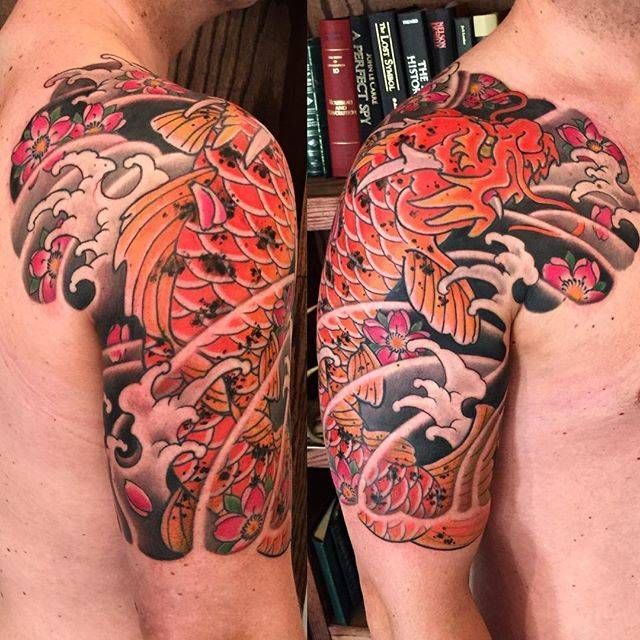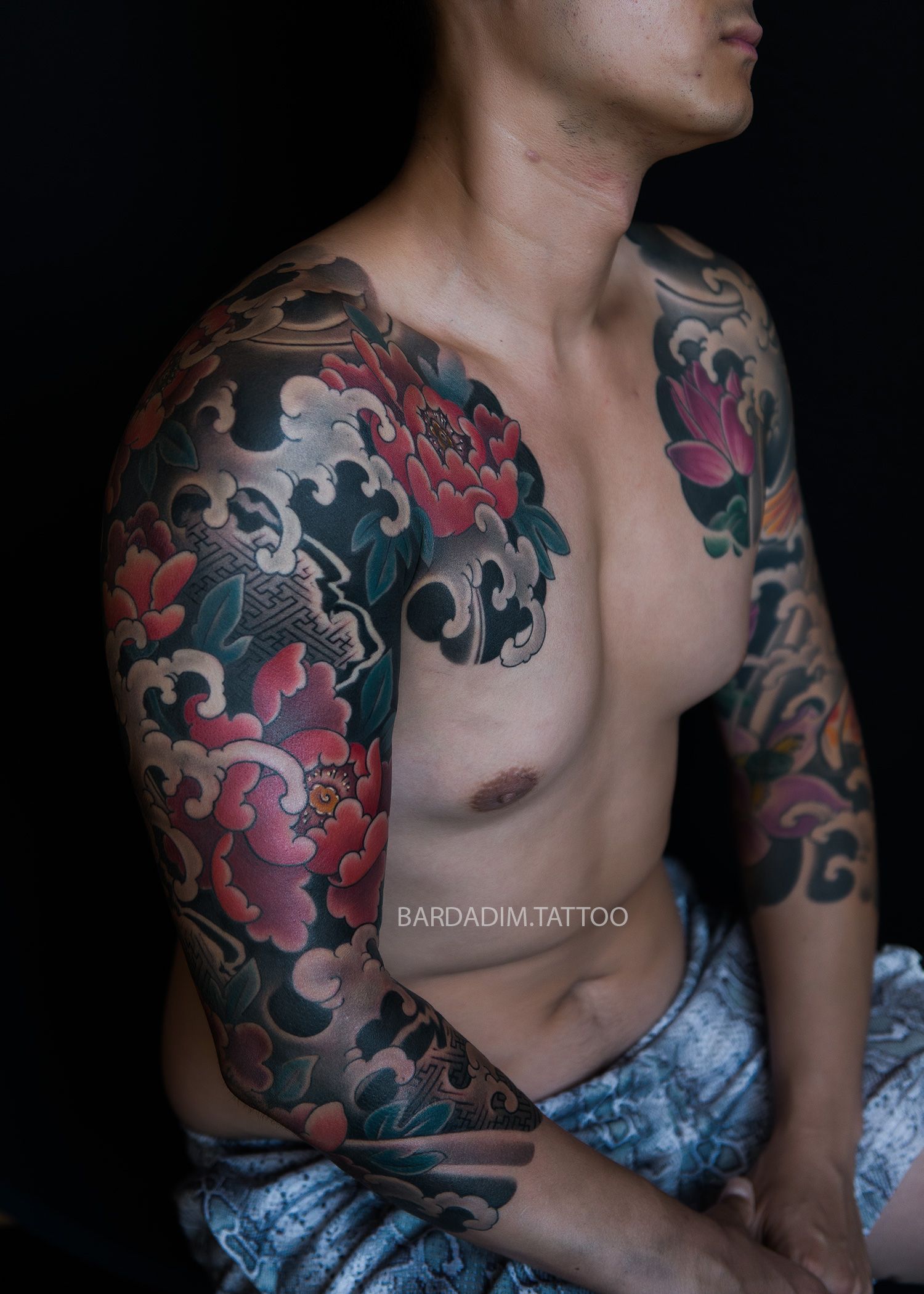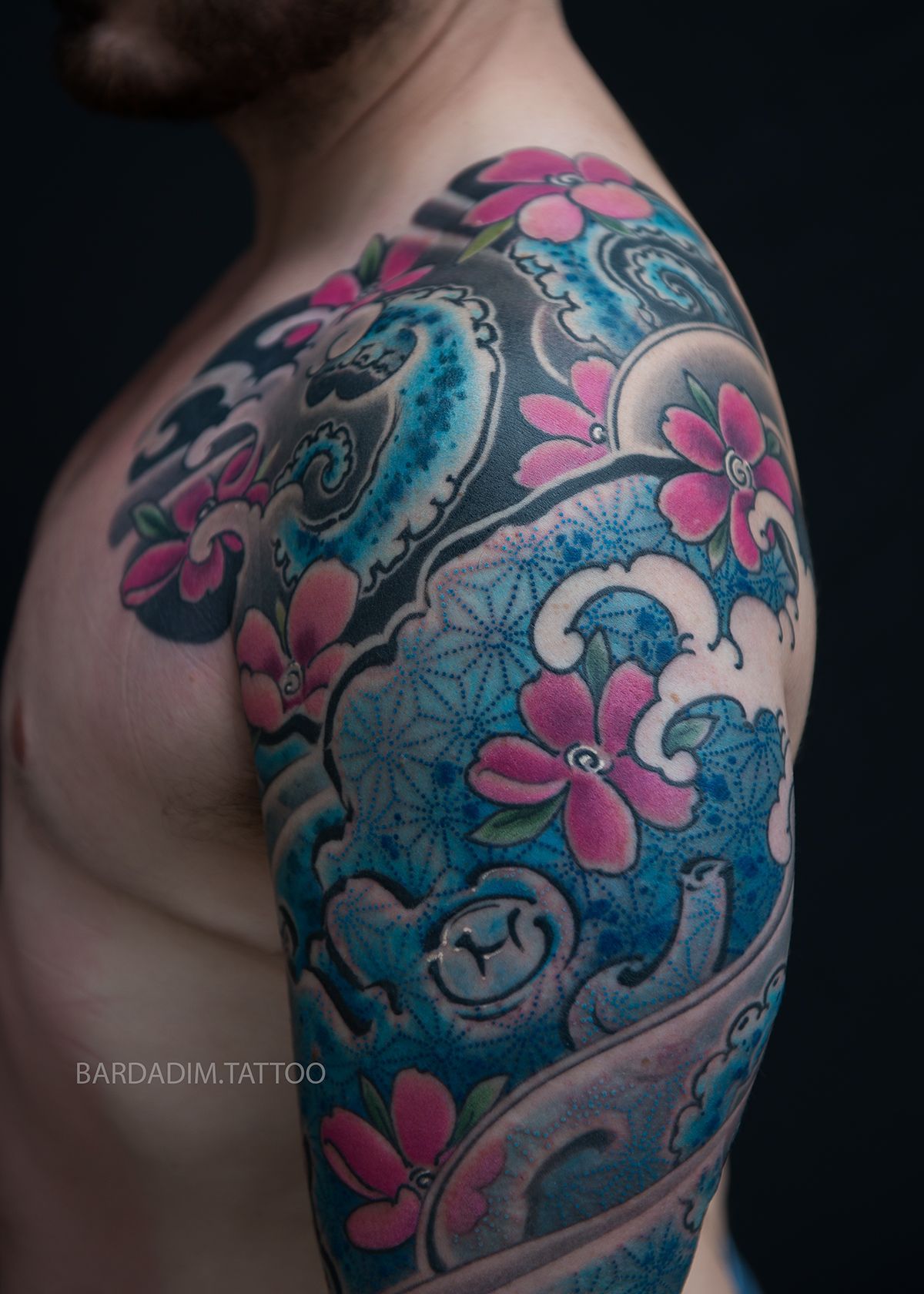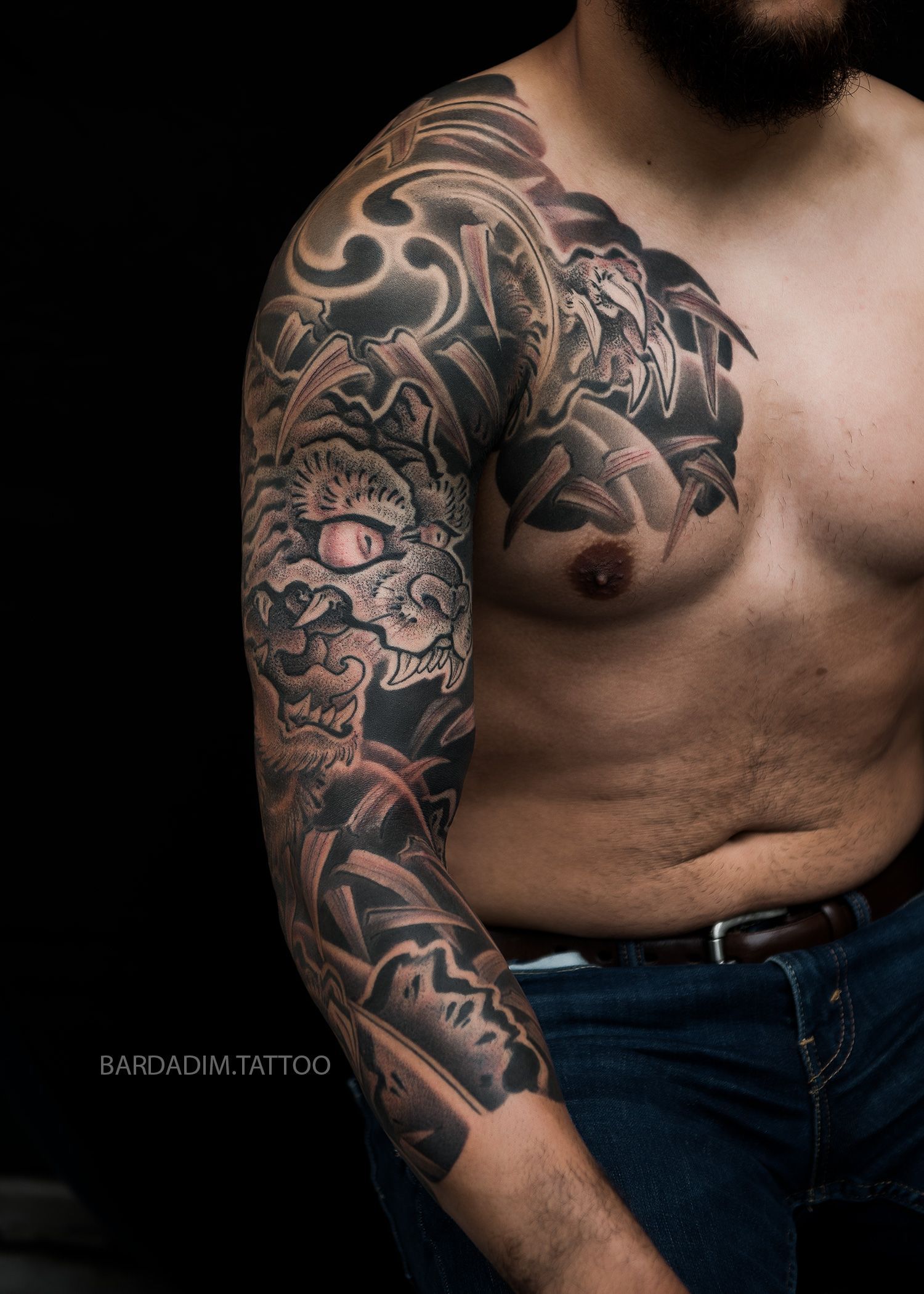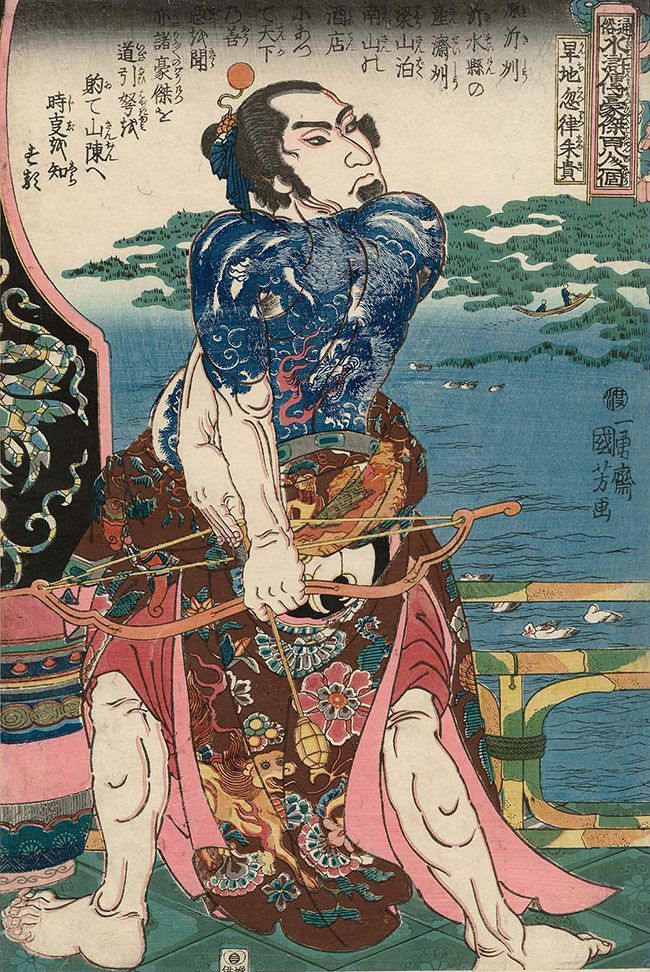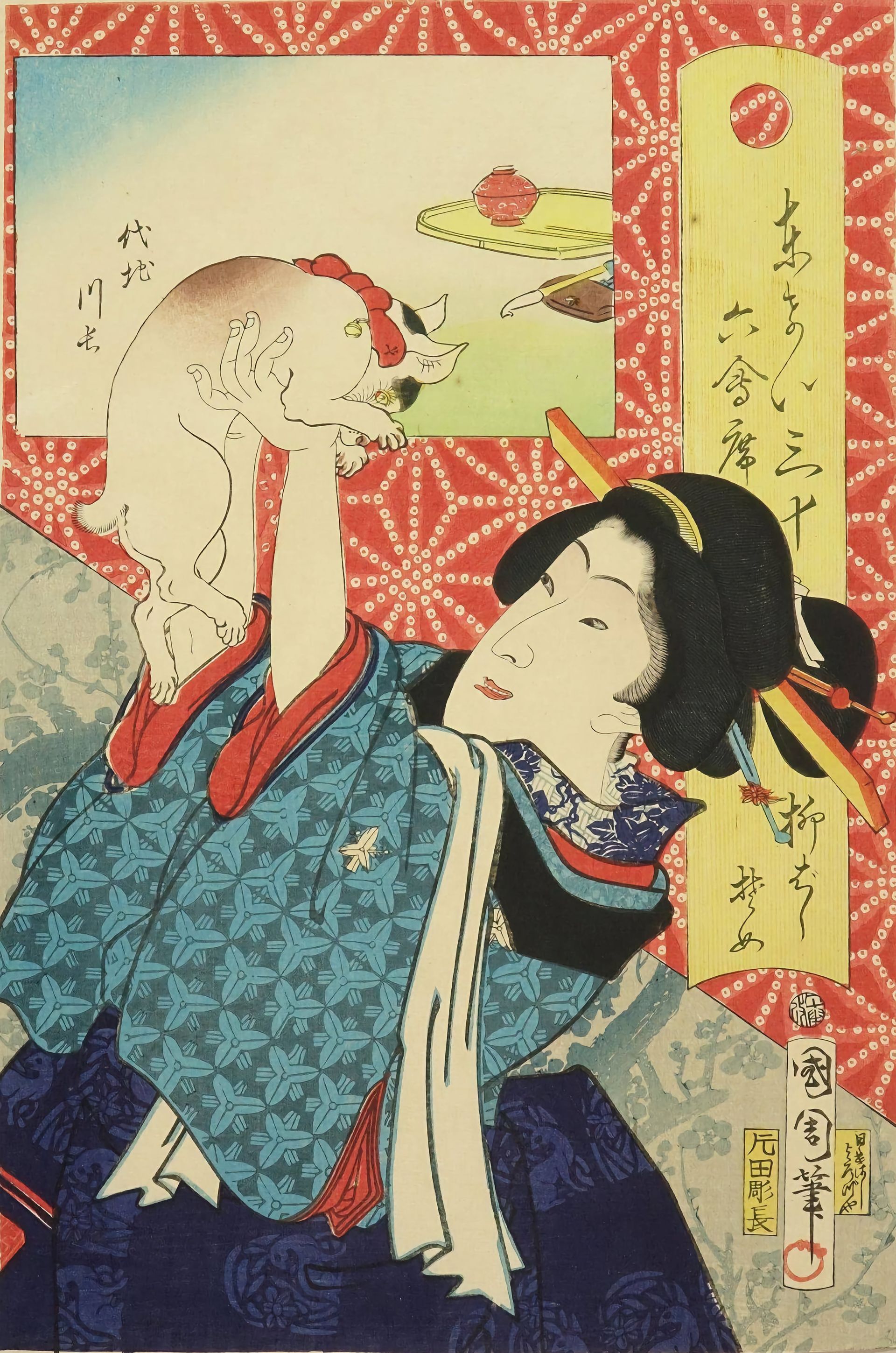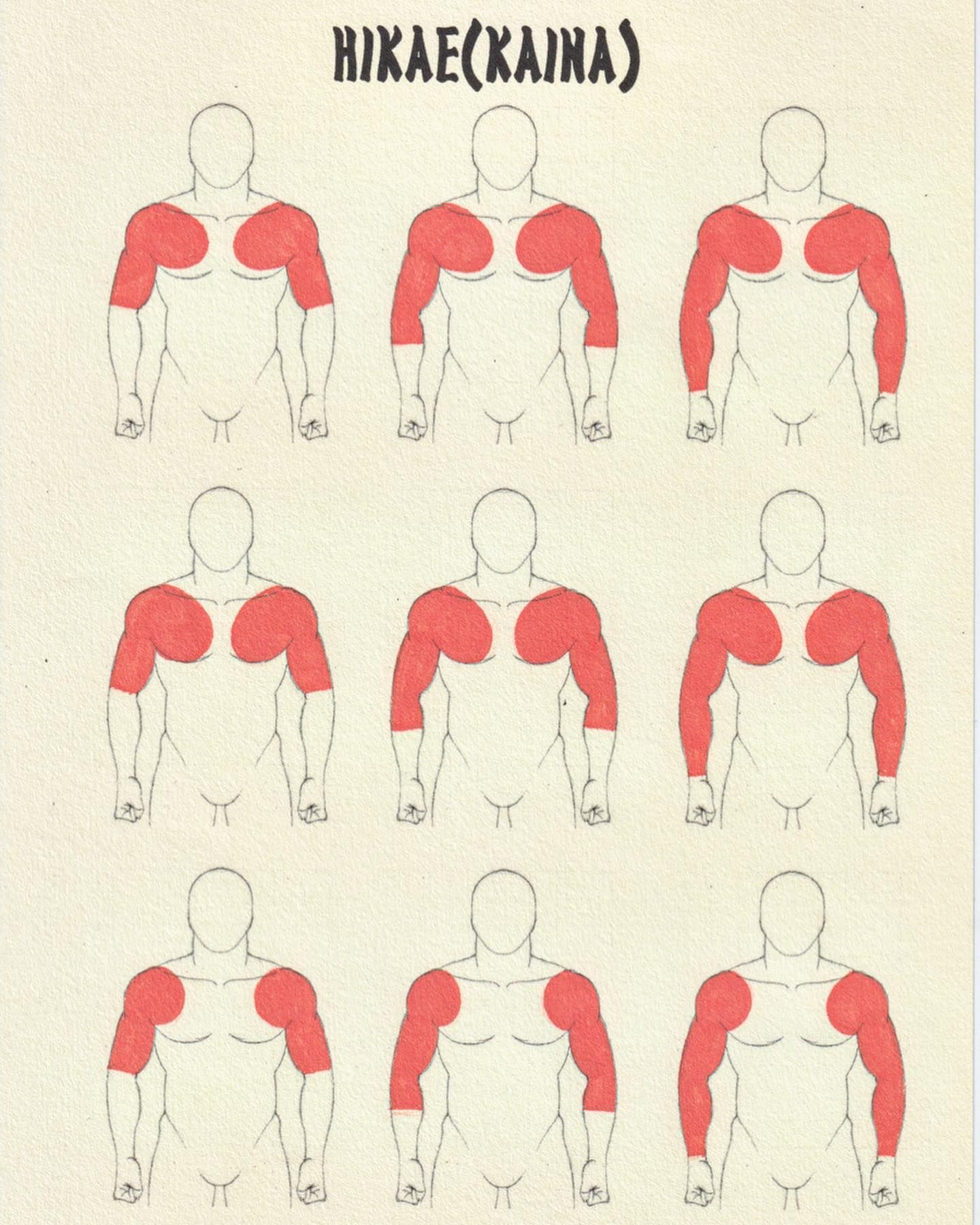Dragon Koi Japanese tattoo
This sleeve started long lime ago in London as Black and Grey Dragon on a shoulder. And this year at London tattoo Convention 2017 we continued this design and made a Full Japanese Sleeve combining the Dragon and Koi Fish. Hope to finish this Dragon Japanese Tattoo next time in London.
RYU (DRAGON)
In the west, it is a greedy, fire-breathing, cave-dwelling, and fear-inspiring creature that jealously guards its hoard. in the Japanese dragon tattoo, however, it symbolizes something very different. Oriental dragons are equally at home in the air or in the water. Usually embodying wisdom, strength and manipulating the forces of the universe for the benefit of people.
The face of the oriental dragon is generally not the face of one creature but many and can be different from dragon to dragon. The dragon can take on characteristics of animals it encounters through its life. The eyes can be of a demon, or rabbit, while the ears are those of a cow, the neck and belly of a snake, the horns of a stag and the scales of a koi. Its hands or talons are from the hawk or eagle and it has saliva and breath like perfume, a voice like the musical ringing of a copper bell or basin. The Asian dragon is usually the bearer of profound blessings. Like other Oriental tattoo designs, the choice of a dragon is generally an aspiration to the qualities of great goodness, wisdom, and power.
When a dragon is seen with colour in its scales, it is thought of as being at least 500 years old, younger dragons have not earned or developed coloured scales yet, and if the dragon lives as long as 1000 years it can grow colourful feathered wings, similar looking to the wings of the Japanese phoenix.
Also the Oriental dragon is not very often a cunningly malevolent beast. Instead it is strength combined with wisdom and usually is benevolent. The choice of dragon is sometimes an aspiration to qualities of wholeness and wisdom.
Dragon can also clutch in one of his claws an object that is variously shown as a ball, a pearl, or a jewel, also known as “the closed-lotus form” essentially the essence of the universe, in order to control the winds, rains, fire and even the planets. This item is essentially seen in various Buddhist designs including temples and grave markers. It represents the spiritual essence of the universe, by which the dragon controls and protects it from those who might usurp those powers. ( Source )
This Dragon Koi Japanese tattoo done by George Bardadim. Tattoo Artist, Brooklyn, NYC.


